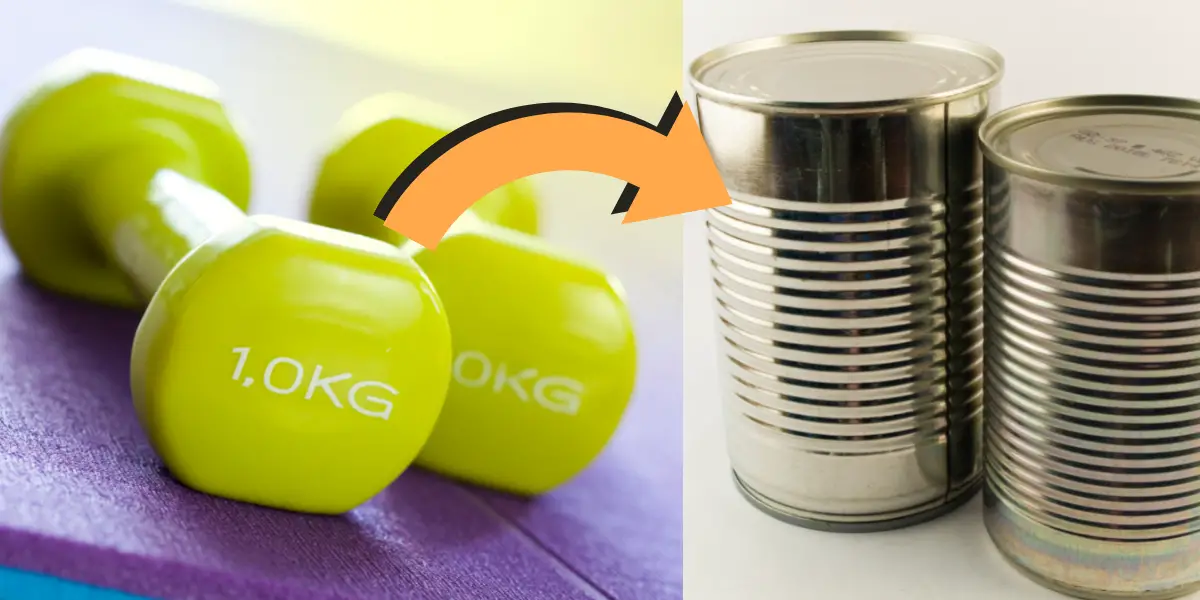Pilates is a popular form of exercise that has been around for over a century. It is a low-impact workout focusing on strengthening the core muscles, improving flexibility, and increasing overall body awareness. However, only some have access to the traditional Pilates equipment, such as a mat, ring, ball, dumbbells, or rollers, commonly used in a Pilates class.
From household items like towels and pillows to gym equipment like resistance bands and cables, various options are available to modify and adapt Pilates exercises to suit your needs and preferences. Fortunately, you can use many substitutes to replicate the benefits of Pilates equipment. In this article, we will explore some of the best Pilates prop substitutions that can be used in place of traditional equipment, allowing you to continue practicing Pilates from the comfort of your own home or on the go.
Introduction to Pilates and Equipment
Pilates is a form of exercise developed in the early 20th century by Joseph Pilates. This low-impact workout builds strength and flexibility through controlled movements and breathing techniques. The goal is to strengthen the core muscles, which include the abdomen, lower back, and hips, to improve posture and body alignment.
Pilates equipment, such as the mat, ring, ball, dumbbells, rollers, and other apparatus, are used to enhance the effectiveness of the exercises and provide resistance to increase muscle activation.
For example, the Pilates mat provides cushioning and support for the exercises, while the Pilates ring adds resistance and improves muscle engagement in the arms and legs.
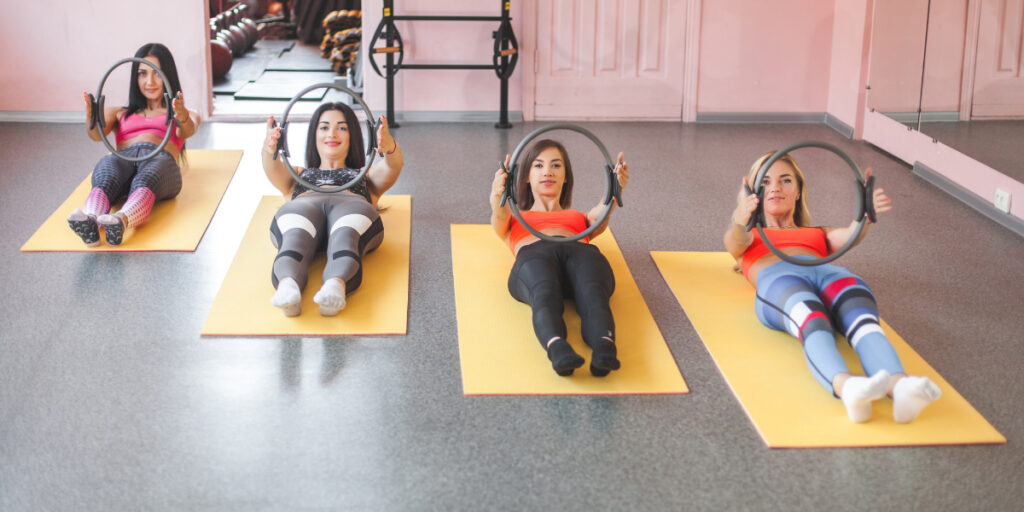
Similarly, the Pilates ball can increase core activation and balance, while the Pilates roller is used for self-myofascial release to improve flexibility and reduce muscle tension.
Pilates equipment is often used in group classes and one-on-one sessions with a trained instructor. Some have access to this equipment due to insufficient resources or space. You can use various substitutions to practice the exercises without needing traditional gear. The following sections will explore some of the best Pilates prop substitutions for mats, rings, balls, and rollers.
Benefits of Pilates Prop Substitutions
The benefits of Pilates prop substitutions are numerous. Using household items and gym equipment as substitutions for traditional Pilates gear can increase accessibility, flexibility, and creativity in workouts. It can also allow you to try new exercises, modify existing ones, and personalize their routines to suit your needs and preferences.
Increased Accessibility
Pilates prop substitutions increase accessibility to the exercises by providing alternatives to traditional equipment that may not be readily available to everyone. For example, a towel or blanket can be used instead of a mat, making it possible to do Pilates at home or while traveling without bulky equipment.
Similarly, resistance bands or tubes can be used in place of the Pilates ring, allowing for a similar range of motion and muscle activation without requiring specialized gear.
Enhanced Flexibility
Pilates prop substitutions can enhance flexibility in workouts by providing alternatives that you can easily modify to meet different needs and preferences. For example, a small pillow or beach ball can be used in place of the Pilates ball, allowing you to adjust their resistance and stability based on their fitness level.
Similarly, foam rollers or tennis balls can be used instead of traditional Pilates rollers for self-massage and trigger point release, providing a more customized approach to stretching and muscle relaxation.
Improved Creativity
Pilates prop substitutions can improve creativity in workouts by providing alternatives that allow for a more personalized and varied approach to the exercises. For example, a chair or wall can be used for support during balance exercises or to modify the intensity of certain movements.
Also, water bottles or canned goods can be used instead of dumbbells, allowing you to adjust your weight and resistance based on your fitness level and goals. Using different Pilates prop substitutions, you can add variety to their workouts, preventing boredom and keeping their routines fresh and engaging.
Mat Substitutions: Towels, Blankets, and Carpet
Mat substitutions such as towels, blankets, and carpets can provide a low-cost and accessible way to practice Pilates exercises without needing a traditional mat. These substitutions can also be modified to provide more or less cushioning depending on personal preference and level of fitness.
Towels
Towels can be a great substitution for a Pilates mat. They are readily available in most households and can be easily rolled up to provide cushioning and support during exercises. Depending on personal preference, towels can also be modified to provide more or less cushioning.
For example, folding the towel in half can provide extra cushioning for exercises requiring more support, such as planks. Using a single layer can provide a more challenging workout for exercises requiring more balance, such as single-leg squats.
Blankets
Blankets can also be used as a substitution for a Pilates mat. They provide more cushioning than towels and can be easily folded or rolled to provide support during exercises. Depending on personal preference, you can modify blankets to provide more or less cushioning.
For example, folding the blanket in half can provide extra cushioning for exercises requiring more support, such as roll-ups. A single layer can provide a more challenging workout for exercises requiring more balance, such as side planks.
Carpet
Carpet can be a great substitution for a Pilates mat, especially for individuals who prefer a more firm and stable surface. Carpet provides good traction and stability during exercises and can be modified to provide more or less cushioning depending on personal preference.
However, it’s important to note that carpet can be abrasive on the skin. Use a towel or blanket as a barrier between the body and the carpet during exercises requiring more skin-to-surface contact, such as rolling exercises. Also see this article investigating if it’s safe to do Pilates on carpet.
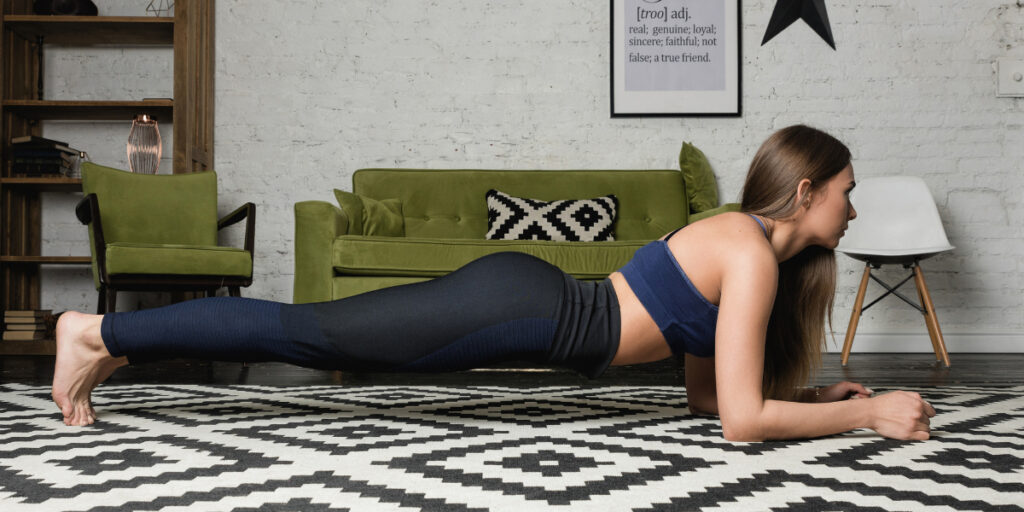
Ring Substitutions: Resistance Bands and Tubes
The Pilates ring, also known as the magic circle, is a popular equipment used to add resistance and increase muscle engagement in the arms and legs during Pilates exercises. However, only some have access to a Pilates ring. Fortunately, alternative Pilates prop substitutions are available, such as resistance bands and tubes, which you can use to replicate the benefits of the Pilates ring.
Resistance Bands
Resistance bands are a great substitution for the Pilates ring. They are affordable, portable, and have various resistance levels to meet different fitness levels and goals. You can use resistance bands in place of the Pilates ring to add resistance and increase muscle engagement in the arms and legs during leg lifts, bicep curls, and chest presses. You can also use them to modify traditional Pilates exercises to provide a more challenging or customized workout.
Tubes
Resistance tubes are another great substitution for the Pilates ring. Like resistance bands, they are affordable, portable, and have various resistance levels. Resistance tubes can be used in place of the Pilates ring to add resistance and increase muscle engagement in the arms and legs during squats, lunges, and chest presses. They can also modify traditional Pilates exercises for a more challenging or customized workout.
It’s important to note that resistance bands and tubes come in different lengths and styles, such as loop bands, figure-eight tubes, and straight tubes. The resistance band or tube type will depend on personal preference and the specific exercise being performed. Additionally, it’s important to choose a resistance level that is appropriate for your fitness levels and goals to prevent injury and ensure the workout’s effectiveness.
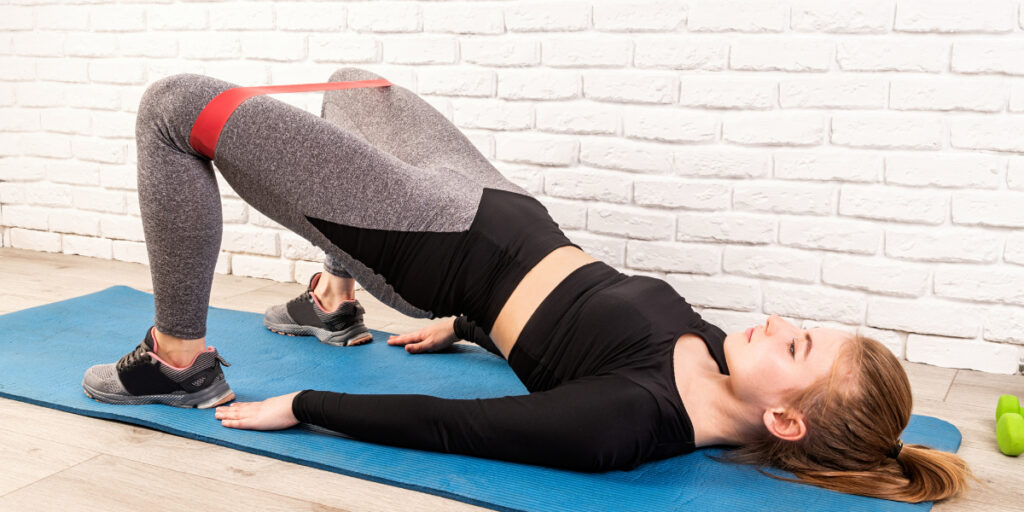
Ball Substitutions: Small Pillows and Beach Balls
The Pilates ball is a versatile equipment commonly used to increase core activation and balance during Pilates exercises. However, only some have access to a Pilates ball. Fortunately, alternative Pilates prop substitutions are available, such as small pillows and beach balls, and you can use that to replicate the benefits of the Pilates ball.
Small Pillows
Small pillows can be a great substitution for the Pilates ball. They are affordable, easy to find, and easily modified to provide more or less resistance depending on personal preference. Small pillows can add stability and balance during leg lifts, planks, and squats. They can also modify traditional Pilates exercises for a more challenging or customized workout.
Beach Balls
Beach balls are another great substitute for the Pilates ball. They are affordable, easy to find and provide a similar level of instability and resistance as a Pilates ball. They can also modify traditional Pilates exercises for a challenging or customized workout.
It’s important to note that small pillows and beach balls come in different sizes, so choosing a size appropriate for your fitness levels and goals is important. Additionally, it’s important to ensure that the substitute provides a similar level of stability and resistance as the Pilates ball to prevent injury and ensure the workout’s effectiveness.
Here’s a great workout I created for use with balls in order to increase your stability, give it a try.
Dumbbell Substitutions: Water Bottles and Canned Goods
Dumbbells are popular equipment in Pilates to add resistance and increase muscle activation. Only some have access to dumbbells, making it difficult to replicate traditional Pilates workouts. Several alternative Pilates prop substitutions are available.
Water Bottles
Water bottles are a versatile substitution for dumbbells, as they can be easily found at home or while traveling. You can use them instead of dumbbells to add resistance and increase muscle activation in exercises such as bicep curls, shoulder presses, and tricep extensions.
You can easily modify the weight of water bottles to provide more or less resistance depending on your fitness level and personal preferences. Additionally, water bottles can add complexity to traditional Pilates exercises, providing a more challenging and engaging workout.
Canned Goods
Canned goods, such as soup cans or bean cans, can also be a great substitution for dumbbells. They are easily accessible and can add resistance to exercises such as chest flies, lateral raises, and hammer curls.
Canned goods are also an affordable alternative to dumbbells, making them a great choice for individuals who want to start working out without investing in expensive equipment. Moreover, you can easily modify them to increase or decrease resistance, and their size and shape can provide a unique challenge to Pilates exercises.
When using water bottles and canned goods as substitutes for dumbbells, you must be mindful of proper form and technique to prevent injury. Additionally, the weight and size of the substitute should be appropriate for your fitness level and goals. Using alternative Pilates prop substitutions can help you to incorporate a full-body workout into your routine without breaking the bank, making it easier to stay fit and healthy.
So grab a couple of tins and try my light weight workout.
Roller Substitutions: Foam Rollers and Tennis Balls
Suppose you want to incorporate Pilates into your workout routine but need access to traditional Pilates equipment. In that case, there are alternative Pilates prop substitutions available you can use that to replicate the benefits of the gear. One such prop is the Pilates roller, which can be substituted with foam rollers or tennis balls.
Foam Rollers
Foam rollers are a versatile substitution for the Pilates roller that you can use to perform a self-myofascial release, improve flexibility, and reduce muscle tension. They are portable, come in different sizes, and can be easily modified to provide more or less pressure depending on your preference.
Foam rollers can help you increase flexibility, reduce muscle soreness, and improve overall physical performance. Foam rollers can target specific muscle groups, such as the back, legs, and arms, for self-massage and trigger point therapy. They can also modify traditional Pilates exercises for a more challenging or customized workout.
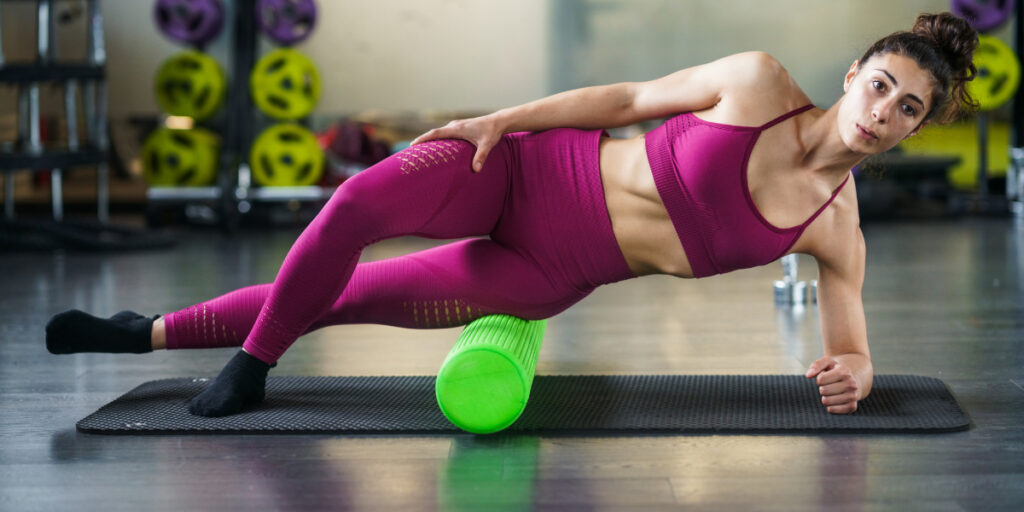
Tennis Balls
Tennis balls are another great substitution for the Pilates roller. They are affordable, readily available, and easily modified to provide more or less pressure depending on your preference. You can use tennis balls for self-myofascial release and trigger point therapy in areas such as the feet, hands, and back.
Using tennis balls in your Pilates routine can help you improve flexibility, relieve muscle tension, and reduce the risk of injury. You can use tennis balls to target specific trigger points by rolling the ball on the affected area, providing a deep tissue massage that can help to release muscle tension and increase flexibility. They can also modify traditional Pilates exercises for a more challenging or customized workout.
When using foam rollers or tennis balls as a substitute for the Pilates roller, it’s crucial to ensure proper form and technique to prevent injury. You should also choose a size and density that is appropriate for your fitness level and goals. Incorporating alternative Pilates prop substitutions can help you to target specific muscle groups and add variety to your workout routine, leading to improved physical performance and a better overall Pilates experience.
Other Equipment Substitutions: Chairs and Walls
If you can’t access traditional Pilates equipment, such as mats, rings, balls, dumbbells, and rollers, don’t worry! Several alternative Pilates prop substitutions are available that you can use to modify or substitute for these pieces of equipment. One such substitution includes using chairs and walls.
Chairs
Chairs are a versatile substitution that you can use to modify traditional Pilates exercises or create new exercises altogether. They can add support or stability during squats, lunges, and leg lifts. You can also use a chair as a prop to modify traditional Pilates exercises, such as the roll-up, by using the chair to assist you in the movement.
Additionally, chairs can increase the intensity of your Pilates workout by adding balance challenges, such as using one leg to perform a lunge or balancing on one leg while performing arm exercises. Using chairs in your Pilates routine can help you improve balance, strength, and overall physical performance.
Walls
Walls can also be a useful Pilates prop substitution, particularly when adding resistance to your exercises. Using a wall, you can perform exercises such as wall squats, push-ups, and wall sits. These exercises are great for building lower body strength and adding variety to your workout routine. Walls can also be used as a prop for traditional Pilates exercises, such as the push-up or the plank, by using the wall to support your feet or hands.
Additionally, you can use walls to add balance challenges to your Pilates exercises, such as performing a wall handstand or wall walk. Incorporating walls into your Pilates routine can help you increase strength, balance, and flexibility.
Incorporating alternative Pilates prop substitutions can help you to add variety to your workout routine and target specific muscle groups, leading to improved physical performance and a better overall Pilates experience. You should always ensure proper form and technique to prevent injury when using chairs and walls as a substitute for traditional Pilates equipment. You should also choose intensity and resistance appropriate for your fitness level and goals.
Modifying Pilates Exercises with Substitutions
Modifying Pilates exercises with substitutions can be a great way to tailor your workout to your fitness level, needs, and goals. Pilates exercises are designed to be versatile, and many can be modified or adapted to suit different body types, fitness levels, or medical conditions. Pilates exercises can be performed with or without props, and substituting certain props can help you modify or perform them more easily.
One way to modify Pilates exercises is by using different props than traditionally used. For example, instead of using a Pilates ball for the bridge exercise, you can use a small pillow or rolled-up towel for support. This can help you to perform the exercise with greater ease, particularly if you have lower back pain or discomfort. Similarly, using a resistance band instead of a Pilates ring can help you to modify exercises such as the clamshell or side leg lifts, making them more accessible for beginners or individuals with limited mobility.
Another way to modify Pilates exercises with substitutions is by adjusting the intensity or resistance level of the exercise. For example, if you find traditional planks too challenging, you can modify the exercise by performing it on your knees or using a wall for support. You can also increase the resistance of certain exercises, such as arm curls or squats, using heavier substitutes for dumbbells, such as canned goods or water bottles.
Finally, modifying Pilates exercises with substitutions can help you to target specific muscle groups or areas of the body. For example, using a foam roller or tennis ball for the self-myofascial release can help to target tight or sore muscles and improve flexibility. Similarly, using a chair or wall as a prop can help you to target specific muscle groups, such as the glutes or legs, and improve balance and stability.
Tips for Incorporating Pilates Prop Substitutions into Your Workout Routine
Incorporating Pilates prop substitutions into your workout routine can add variety, challenge, and effectiveness to your Pilates practice. Using alternative props can help you to target specific muscle groups, modify exercises, and provide a deeper level of engagement and focus to your workouts. However, using props correctly and safely is important to avoid injury and ensure you get the most out of your Pilates practice.
Here are some tips for incorporating Pilates prop substitutions into your workout routine:
- Choose props that are appropriate for your fitness level and goals. It’s important to choose props that are challenging but not too difficult and that can be modified or adjusted to suit your needs.
- Start with simple exercises and gradually build up to more complex movements. This can help you to build strength, flexibility, and balance without overwhelming your body.
- Focus on proper form and technique. Maintaining good posture and alignment during Pilates exercises is important, whether using traditional props or substitutions. This can help prevent injury and ensure you’re targeting the right muscle groups.
- Use props in conjunction with traditional Pilates exercise to add variety and challenge. For example, you can use a resistance band to add intensity to leg lifts or a foam roller to perform self-massage and trigger point release during rest periods.
- Listen to your body and adjust as needed. If a prop is causing discomfort or pain, it’s important to modify or adjust the exercise or stop altogether. Pilates should be challenging but enjoyable, and you should always listen to your body to avoid injury and achieve the best results.
Incorporating Pilates prop substitutions can be a great way to add variety and challenge to your Pilates practice. By choosing appropriate props, focusing on proper form and technique, and gradually building up to more complex movements, you can enjoy the many benefits of Pilates and achieve your fitness goals.
How To Build A Pilates Home Workout Routine With Minimal Equipment
If you want to build a Pilates home workout routine with minimal equipment, you’re in luck! Pilates is a versatile form of exercise that can be done with very little equipment, making it an accessible and convenient option for home workouts. Here are some tips to help you build a Pilates home workout routine with minimal equipment:
- Start with the basics: The foundation of Pilates is rooted in a few simple exercises that focus on core strength, balance, and flexibility. These exercises can be done with minimal equipment, such as a mat and a resistance band, providing a full-body workout. Start with basic Pilates exercises, such as the pelvic tilt, the plank, and the bridge, and gradually build up to more advanced movements.
- Incorporate bodyweight exercises: Many Pilates exercises can use your body weight as resistance. By incorporating bodyweight exercises into your Pilates home workout routine, you can improve your strength and flexibility without needing any equipment. You can modify exercises such as squats, lunges, and push-ups to include Pilates principles, such as controlled movement and proper alignment. By incorporating bodyweight exercises into your Pilates home workout routine, you can improve your strength and flexibility without needing any equipment.
- Use props creatively: While you may need access to traditional Pilates equipment, many household items can be used as props, such as towels, pillows, and water bottles. Using props creatively, you can modify Pilates exercises to make them more challenging or target specific muscle groups. For example, a towel can be used as a substitute for a Pilates ball, and a water bottle can be used as a substitute for a dumbbell.
- Create a routine: To get the most out of your Pilates home workout routine, it’s important to create a structured routine that includes warm-up, workout, and cool-down phases. This can help you to stay motivated and focused and ensure that you’re getting a full-body workout. You can find Pilates workout routines online or work with a Pilates instructor to create a customized routine that meets your fitness goals.
- Incorporate mindfulness: Pilates is a physical exercise and a mental practice emphasizing mindfulness and focus. Incorporating mindfulness into your Pilates home workout routine can help you to stay present and engaged and improve your overall mental health. Try incorporating breathing exercises or meditation into your routine, or focus on being present during each exercise.
Building a Pilates home workout routine with minimal equipment is a great way to improve your strength, flexibility, and overall physical and mental health. By starting with the basics, incorporating bodyweight exercises, using props creatively, creating a routine, and incorporating mindfulness, you can enjoy the many benefits of Pilates from the comfort of your own home.
Sources:
- https://www.coachmmorris.com/pilates-a-low-impact-exercise-to-improve-flexibility-strength-and-posture/
- https://yogapantsrage.com/what-to-use-instead-of-a-yoga-mat/
- https://www.sweat.com/blogs/fitness/resistance-band-exercises
- https://www.sharpmuscle.com/exercises/isolation-exercises/

